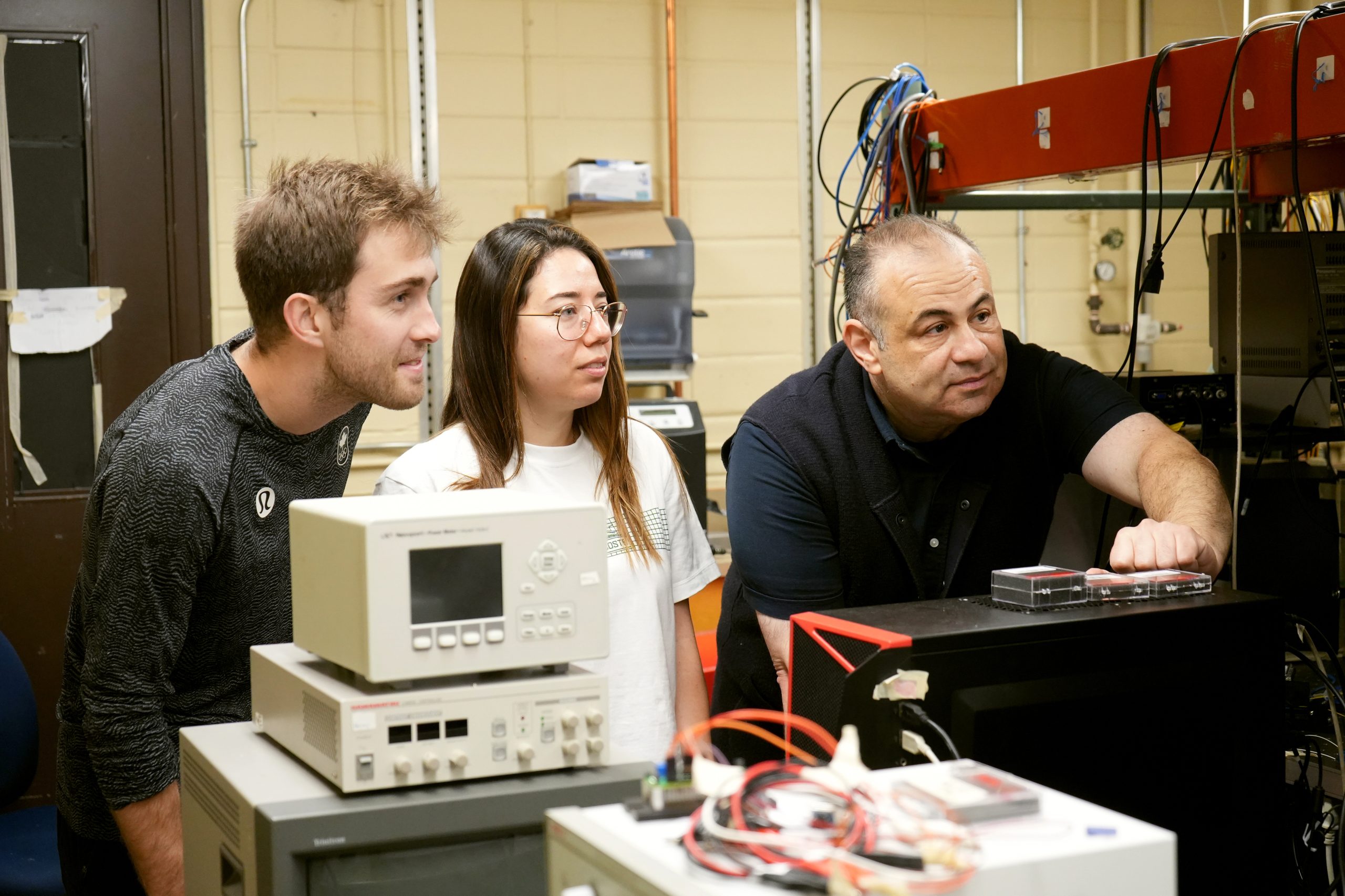A research team led by ECE professors Amr Helmy and Ravi Adve will further their work advancing quantum sensor technology, thanks to a funding boost from the federal government.
The research team — which includes professors from the University of Alberta, Carleton University, McMaster University, the University of Waterloo — was awarded funding for four years from Canada’s Department of National Defence (DND) under its Innovation for Defence Excellence and Security (IDEaS) program. IDEaS invests in research and technology aimed at meeting the demands of today’s complex global defence and security environment and is helping turn innovative thinking into tangible solutions for the DND and the Canadian Armed Forces, as well as Canadians.
Helmy, Adve and their colleagues will focus on developing quantum sensors that can more accurately determine geolocation compared to current sensors. Their work could improve situational awareness for times when the Global Positioning System (GPS) is unavailable, spotty or not to be trusted.
“GPS does not function in all latitudes,” says Helmy. “If a ship is going from the east coast of Canada to the west through the north, it won’t have GPS, which by design covers a strip of earth plus or minus 64 degrees.
“And in certain places around the globe, the GPS signal can be jammed or, potentially, spoofed to deliberately try and convince someone they’re somewhere they’re not.”
Unlike GPS, which uses signals from orbiting satellites, other sensor technologies can derive geolocation without external references. Accelerometers, gyroscopes and other motion-sensing devices make up inertial navigation systems (INS), which measure the acceleration and angular velocity of a moving object to derive a position based on knowledge of its starting point.
INS is often used in addition to GPS to help pin an object back to the grid. The two methods work together for more efficiency and accuracy — much like your phone asking you to turn on your Wi-Fi along with your cell signal so it can triangulate your location using wireless access points around you.
Today’s highly sophisticated INS use interferometry, the interference of waves of light, to obtain measurements calibrated at the nanoscale. But this technique has reached operational limits as dictated by quantum law.
“What we’re trying to do is push beyond the standard quantum limit for many kinds of interferometric measurements, for more sensitive, better performing sensors than the ones afforded to us by classical effects,” says Helmy.
The problem with classical sensors is noise, the random movement of photons and random phase drift that every beam of light contains. To overcome this, the team will exploit a quantum phenomenon called squeezed light, which takes advantage of a quantum law that allows for more certain measurements of one feature of a particle at the expense of another feature.
The idea is to measure the photon more precisely in the variable that’s most helpful.
“We can remove the noise from one degree of measurement and throw it in the other degree of freedom,” Helmy says. “We’re essentially consolidating the certainty in the measurement that’s important to us and achieving a quieter beam.”
This research angle is one of many in the project.
“Outside our work on squeezed light at U of T, the project includes a formidable team working on other topics, such as magnetometry, as well as machine learning approaches to enhance sensor utilization for situational awareness, among others.”
Helmy sees the project belonging to a ground swell of quantum applications currently being explored by engineers.
“The bulk of the work done so far in extracting the potential from quantum effects has been carried out in physics departments,” he says. “But engineering departments use quantum in conjunction with a different set of principles and metrics to make it viable and portable — to get quantum out of the lab and into the field.”
For instance, Helmy can picture a future where the optical advances behind quantum sensor technology find applications in structural imaging, such as scanning for stresses in the fibre body of an airplane or bioimaging.
“Within ten years I can easily imagine such optical tech in your ophthalmologist’s office,” he says. “Such devices operate on a very low light level and would be ideal for sensitive cells, such as those in our eye and brain, or other in vivo imaging.”
Many at U of T Engineering are excited by the potential applications this work could uncover.
“Professors Helmy and Adve are among a growing group of researchers in ECE successfully pushing the boundaries of quantum technologies to enable a wave of new applications for society,” says Professor Deepa Kundur, chair of the Edward S. Rogers Sr. Department of Electrical & Computer Engineering. “Electrical engineering know-how is a critical element when merging cutting-edge quantum science with engineering design, and I have no doubt that this project will lead to many novel advances.”




